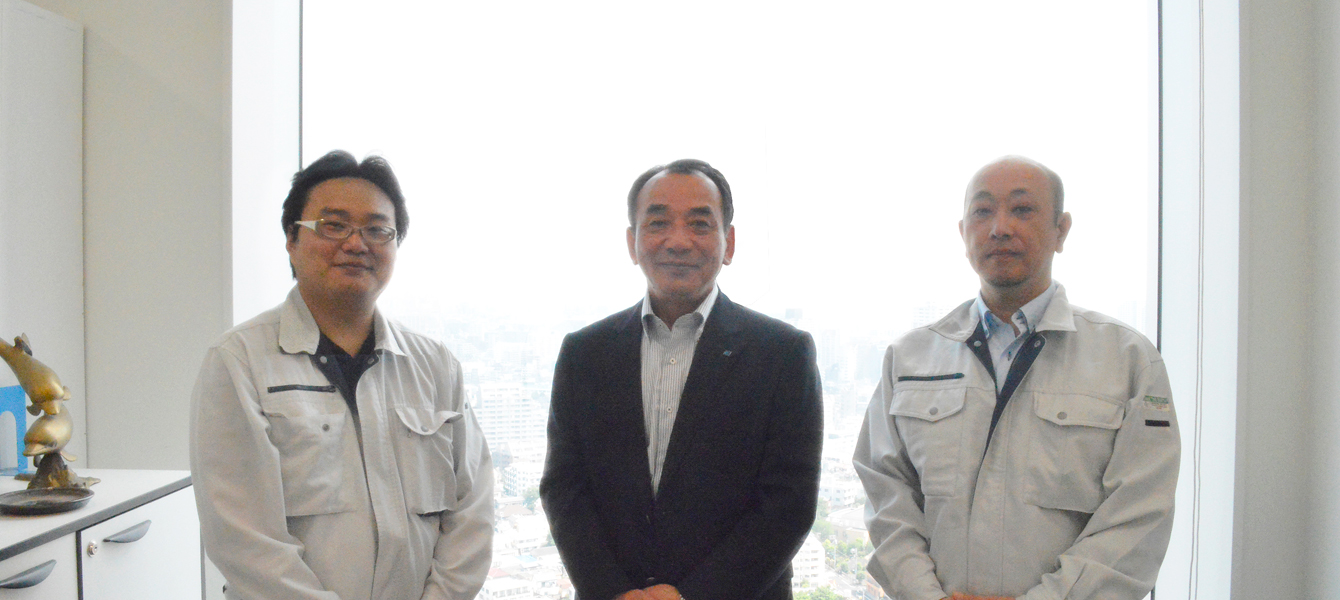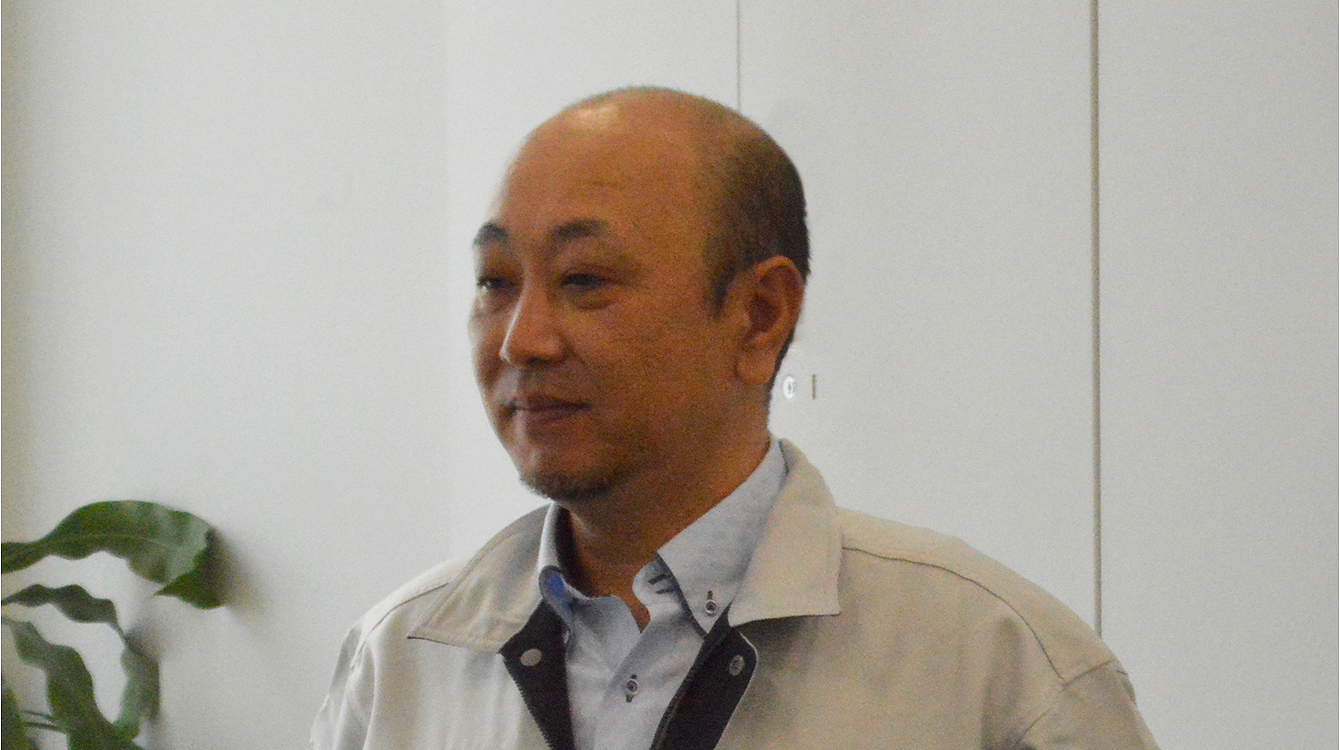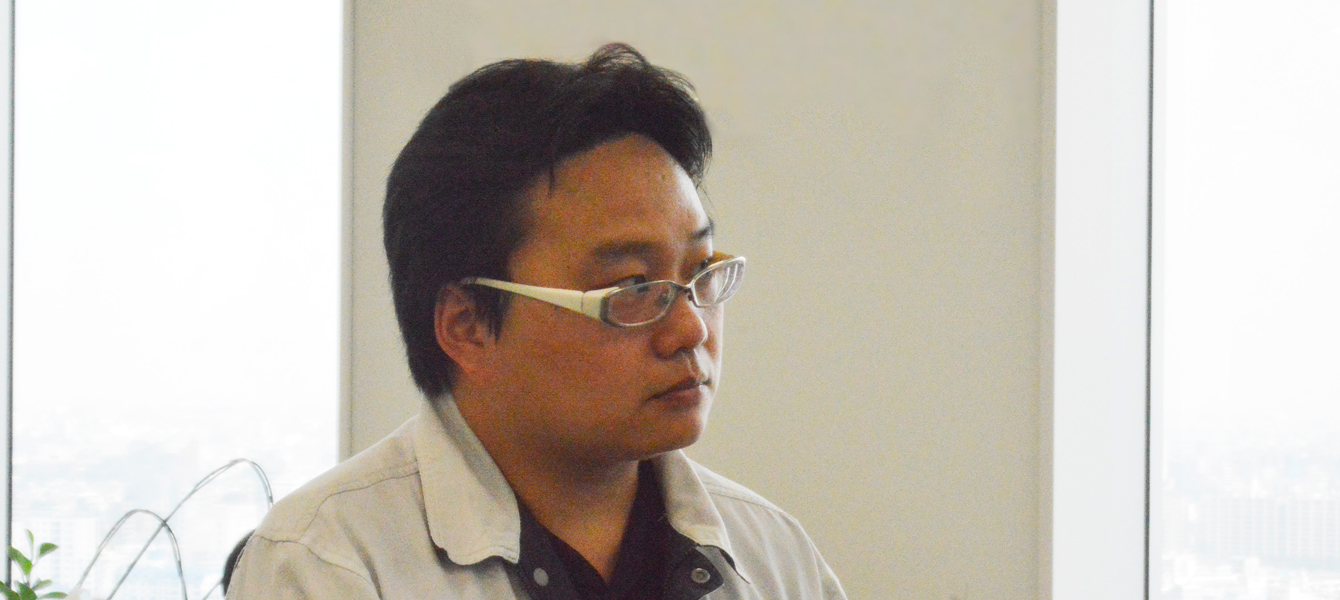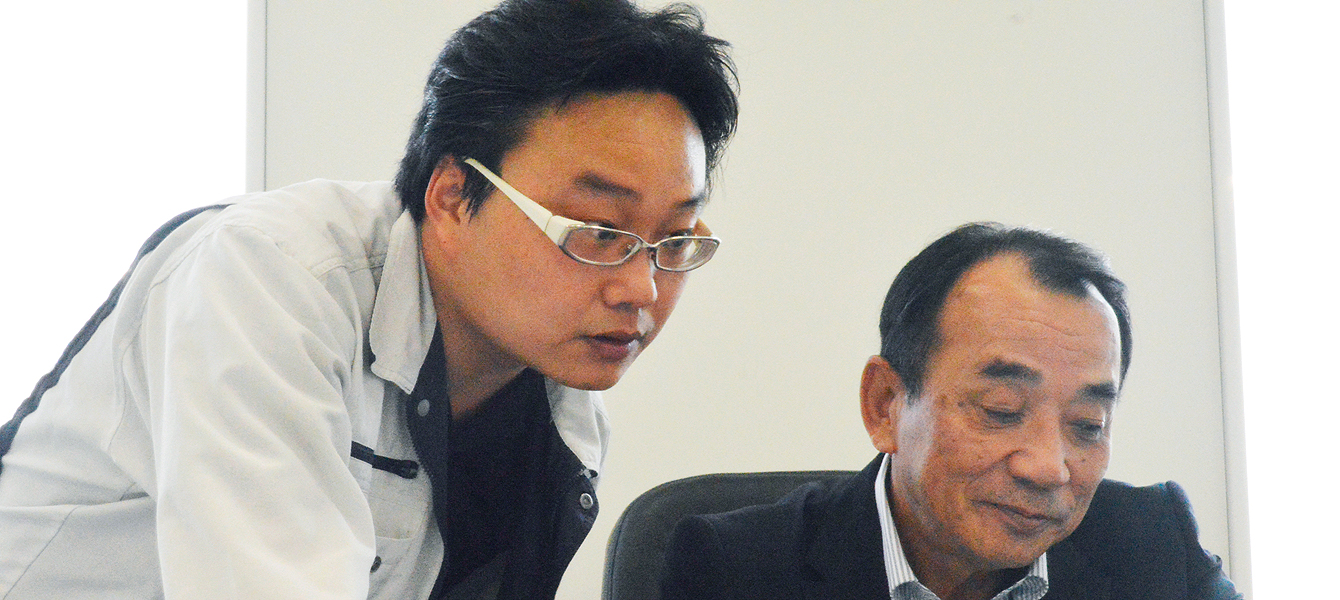|
PROJECT STORY 06 |

|
|---|
Trio’s Teamwork Led Major Project to Success
―Behind the Scenes at the Noi Bai International Airport Project―

|
A major project kicked off Construction of Terminal 2 at the Noi Bai International Airport (Noi Bai T2) started in June 2012.
Major projects of this scale tend to fall behind schedule for various reasons even in Japan. The 30-month project period was very short, considering the size and complexity of the work involved. Moreover, the terminal was scheduled to start operation on the day following the delivery date. The schedule was extremely tight.
As the construction of the terminal building slipped behind schedule, the issue of the short construction period remained a headache for members of the JESCO Group right up to the end of the project. Obviously, installation of lighting equipment cannot be started unless progress is made on the construction of the building.
Typically, a major construction project is undertaken by a consortium consisting of a general contractor and various specialized companies. Hajime Nakamuta, then President of JESCO ASIA, who was in charge of negotiation and coordination with external parties as the project leader, recalls: “Other companies involved in the project often asked me if we could make it. Although I was confident that we would get everything done on time, looking back I feel we did really well to make it.” With only three months left before the delivery date, 13,000 out of some 20,000 units of lighting equipment had yet to be installed. It was only natural that the external parties were concerned. |

|
|
Abundant field experience supports preparation of working drawings When construction of a building slips behind schedule, it puts pressure on the schedule of the subsequent electrical work, initially affecting preparation of working drawings that workers use in their work at the site. Michihiko Ochiai, who was then working for JESCO CNS, was responsible for working drawings for electrical work of this project. Although Ochiai, who is currently General Manager of the Overseas Project Department, had plenty of experience in managing electrical projects in Japan, this was his first overseas project. Owing to the scale of the project, he found things quite perplexing at first.
In preparing working drawings, wiring is the key to smooth installation of lighting equipment. In reality, wiring often cannot be implemented as originally planned. Generally, diversions, such as around sashes, are sought to find a solution. However, in view of the size of the project and with construction slipping behind schedule, they had to figure out solutions in parallel with the ongoing construction work since waiting until the completion of construction wasn’t an option. So Ochiai had to prepare working drawings based on forecasts of the progress of the construction with a time horizon of six months to one year. He formulated several approaches through frequent negotiations with the design firm supervising construction. Coordination was left in the hands of Nakamuta who had abundant experience overseas and as such enjoyed the confidence of the various parties involved. He proved to be a skilled coordinator who overcame many difficulties.
Ochiai also had to deal with cultural and communication issues. The workforce was composed primarily of Vietnamese but with some people from elsewhere in Southeast Asia plus a few Europeans. Japanese-style implicit communication wouldn’t work. Ochiai says, “As Mr. Nakamuta put it, ‘What is considered normal in Japan makes no sense elsewhere in the world,’ and I completely agree with him. I learned the importance of considering how best to motivate workers to take the initiative.” Having overcome one challenge by preparing working drawings in an unusual way, there was another challenge: a site with a multinational workforce. |

|
|
300 local workers hired at the peak As the interior work got into full swing, the site was gripped with a sense of urgency. At that point, Nakamuta decided to hire 300 local workers, which was highly unusual for an overseas project.
Securing the workforce alone did not solve the problem. It was necessary to evaluate the aptitude of workers of diverse nationalities, organize them into teams and assign tasks, explain how to interpret the working drawings, and motivate them to perform tasks accurately. Although the majority of the workers were Vietnamese, who are well known for their diligence, a great deal of effort was required to communicate a vast amount of information to the workers.
Hu Yuwai, then only in his second year at JESCO CNS, was assigned to Vietnam as a coordinator just 12 months before the delivery date.
More than making up for Hu’s lack of experience was his outstanding ability to motivate others. That was why he was selected for the job. According to Nakamuta, Hu “loved the site.” He spent virtually all his time on site and took charge of the local workers. Even employees of other companies involved in the project admired Hu’s enthusiasm.
After many twists and turns, the Noi Bai T2 project was completed at the end of 2014. Nakamuta points to the communication triangle composed of Ochiai, Hu, and himself as the key to accomplishing the project. Because this triangle worked so well, it was possible to overcome the difficulties together with the local workers. |
|
Overcoming the difficulties: a big step toward a flourishing business in Southeast Asia On the day following the delivery, watching the first airplane taxi up to the passenger boarding bridge of the new terminal building, Hu felt a deep surge of emotion as Noi Bai T2 commenced operation. |

|
|
The experience of participating in a major project of a scale that is rare even in Japan, with all the challenges it involves, is exhilarating. Nakamuta is convinced such an experience stimulates personal growth and moreover is a stepping-stone to subsequent projects. In the rapidly developing emerging-market countries of Asia, growth is expected in the number of construction projects for transportation infrastructure, including airports. Our track record, which now includes the prestigious Noi Bai International Airport project, enhances the attractiveness of the JESCO Group to prospective clients.
In 2016, the JESCO Group was delighted by the announcement that the Noi Bai T2 project had won the Engineering Commendation Award of the Engineering Advancement Association of Japan. Such recognition by a highly esteemed professional body encourages all of us at the JESCO Group as we take pride in our contribution to the economic development of Vietnam while tackling new projects.
(As of September 2017 when the article was posted) |

Hajime Nakamuta
President and Representative Director
JESCO ASIA JOINT STOCK COMPANY

Michihiko Ochiai
Overseas Project Department, Project Division
JESCO CNS Co., LTD.

Hu Yuwai
Overseas Project Department, Project Division
JESCO CNS Co., LTD.


